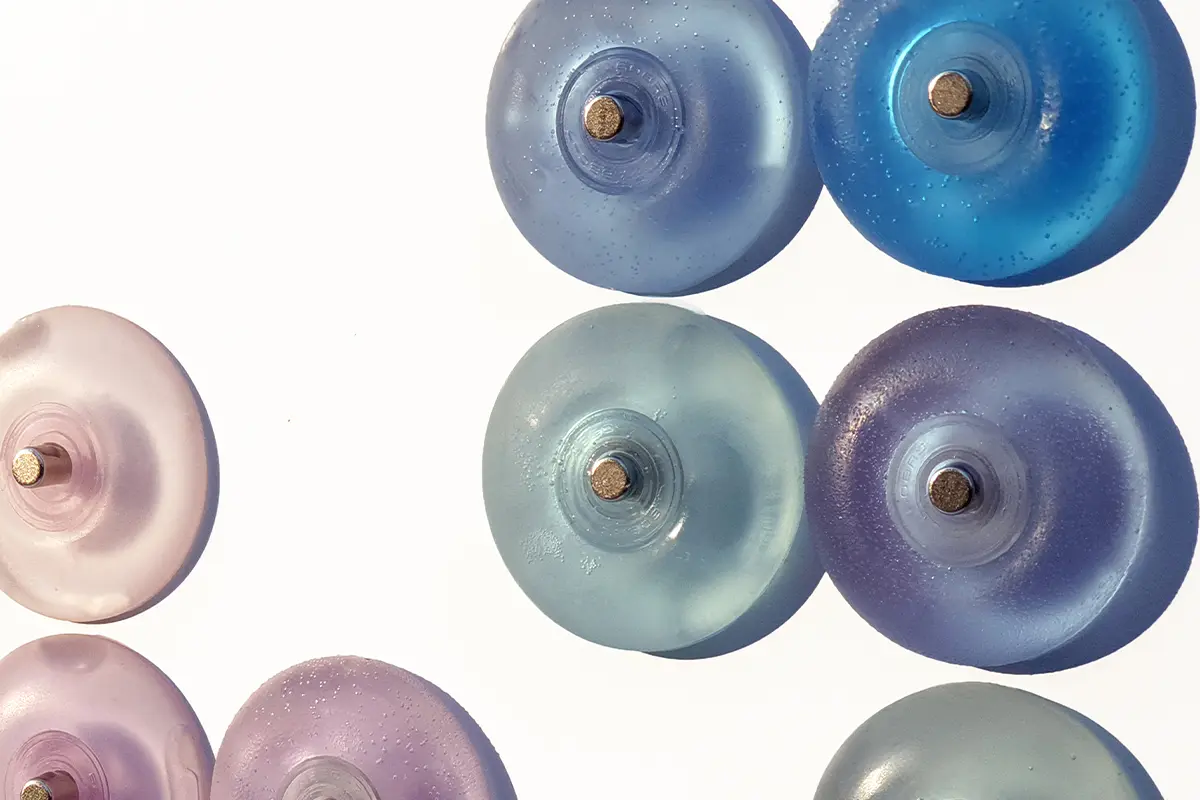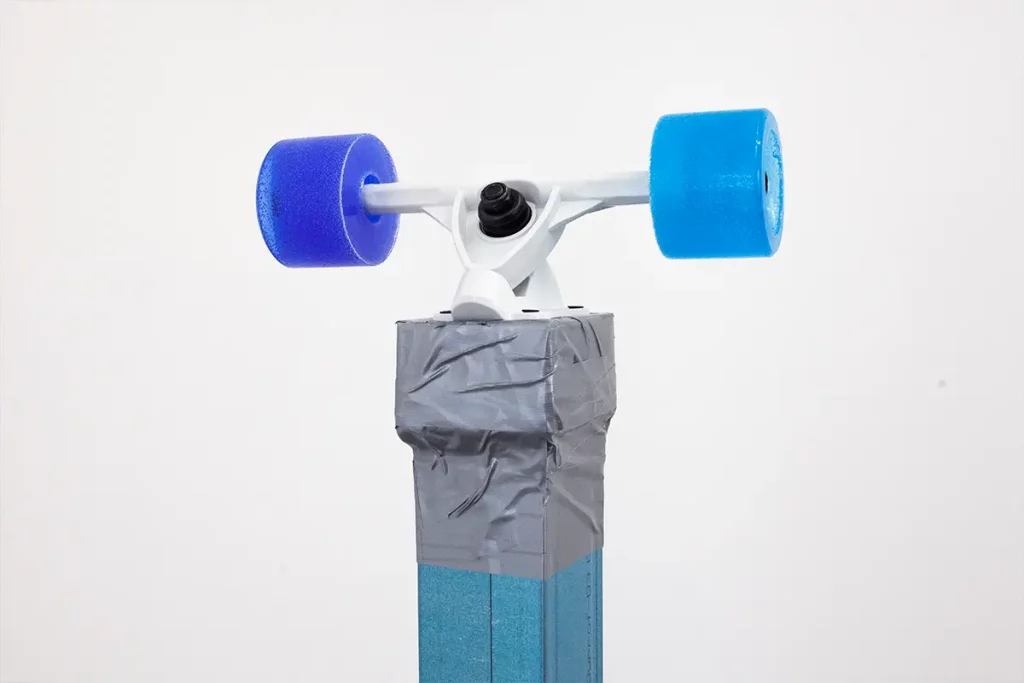At the intersection of Swiss and Italian art market: research on the role of galleries in nowadays social media-influenced art world
Ramo Gallery: from Lugano to Como, at the intersection of Swiss and Italian art sceneries
Galleria Ramo started as a pop-up location in Lugano out of Simon David and Benedetta De Rosa ’s interest in curating and supporting their generation of emerging artists. Their site-specific curatorial projects flourished in different, abandoned locations around Lugano. The gallery was founded in 2018 when they decided to have a permanent space to do shows and to support the artists that they exhibited in a more structured way along their journey to the foundation of a gallery.
Founder Simon David shared the journey that led Ramo Gallery to the stage it’s positioned now: «We were working in Lugano when we first opened Galleria Ramo in Como. Lugano’s art scene is for mainly established artists. It was necessary for me to work with my generation of artists – meaning born from the Eighties onwards. Como has a great art history even though there were no commercial galleries left in the city when we opened Ramo. We thought it to be strategic to base ourselves in Como as it’s geographically between Milan and Switzerland and it attracts many people from all over Italy and beyond. During the first year we did not represent any artist. We wanted to experiment. At the moment we established connections with artists and we are now representing eight artists, five of which are Italian. We made this selection through all the research that came together before the gallery establishment, when we were studying and researching our generation of artists».
Ramo Gallery’s manifesto
Galleria Ramo allows for freedom of expression, working on uniquely curated exhibitions, providing a platform for artists to express their creative freedom, developing new forms of dialogue between local and international artists, visitors, curators, public institutions and collectors proposing new situations and radical changes rather than looking backwards.
«In a world of deceit, art is truth. ‘Contemporary’ or ‘Now’ art has a special currency today, as a reflection of our society. Getting lost while standing in front of a work of art can bring us back to finding ourselves, in a time of collective disorientation», asserts the gallery manifesto.
Ramo Gallery for the local collectivity
Simon David states that: «We were the only commercial gallery in Como when we opened. We wanted confrontation with the local public from the beginning. There are many collectors living around Lake Como while the general public of the city doesn’t understand what we do. We host a consistent collection of books on arts and culture which is available for consultation. The aim is to have an open approach to younger generations to come and have a place where they can sit to consult books that are not available at the municipal library».
A research-based gallery: Ramo Gallery’s approach to contemporary art
Ramo Gallery has consistent research supporting the artists’ selection and exhibitions. The founders’ subjective taste is visible as there’s a common denominator for all the represented artists despite their diverse practices and privileged medium.
«The research adds up what I’m seeing. Conceptual and minimalist art is something I’ve always liked even when I was a journalist. At that time, I was indeed attracted to photojournalism that was somehow in between art and reportage though a topographic aesthetic. The documentation part of the artist I represent is as relevant as their works. Geopolitics and borderless art are other major key points to understand our represented artists’ selection».
Hurricane Billy: Ramo Gallery proposes a solo exhibition by South-Korean artist Hyun Cho
In the case of the latest exhibition curated and presented at Ramo Gallery – Hurricane Billy by South-Korean artist Hyun Cho – the interest of the founder in geopolitics and borderless art stands out. Born in Seoul and raised in Sydney and New York to study arts, Cho set the basis of her research in the understanding of her own identity regardless gender or ethnicity and with an ironic approach.
«I was born in South Korea and have spent the last 20 years traveling outside of the country. It is not my obligation to create pieces that represent my Korean heritage and culture. My art, on the other hand, reflects my personality and individual agency. I’ve always been interested in the idea of freedom and personal agency in commodified cultures, built environments, and popular culture in experimental ways». asserts Cho. «My practice lingers around these skateboard wheels I create with epoxy resin and color pigments. Skateboard wheels are in my works free of their previous limitations. In a playful way, the assemblage sculpture that comes out of my research process considers the semantics of a commodified, architectural, complex societal field within the gallery space».
Hurricane Billy (Dennis Hopper!), Moon! Evening Walk, Crucial Babe No.1 and Ask My Daddy
«In ‘Hurricane Billy (Dennis Hopper!)’ and ‘Moon! Evening Walk’, combined with one of my own phrases such as ‘Crucial Babe No.1’ and ‘Ask My Daddy’. These short phrases were written during my time in New York. The phrases I create are fundamental aspects of my practice and are employed in many of my sculptures and paintings as direct reflections of my personality. I borrow the lyrical style of Pop and Punk rock music lyrics, which are short, appealing, and repeatable, to create these phrases. I also consider the rhyme and rhythm in Rap music as well, I aim to examine these lyrical patterns and compose phrases as self-contained linguistic sculptures; a counterpart to my sculptural, ready-made assemblages. After all, one of my earliest encounters with Western art was when I was a child. My mother handed me an international contemporary art journal on a regular basis. I was fascinated with Duchamp, the Fluxus movement of the 1970s, Pop Art, British artists, the idea of appropriation, American films, and German architecture, among other things, which surely influenced my ironic and conceptual love for arts».
Ramo Gallery’s owner Simon J David explains what it means to be a gallerist today
«We live in a time where there are no more roles. A curator can be whatever they want for example, and so a gallerist. I’m not for defining titles but I think that for artists it is easier to have people that have titles they can refer to. There have always been trends in the art world and titles too. But when trends become bigger than they should – meaning they overgrow – people get bored and expect yet another trend to come. This phenomenon is a reflection of social media logic. In the past, before the social media era, trends were slower and gave the opportunity for new things to grow within them. Nowadays we move from trend to trend without any research not allowing for thoughts and discussions to arise. More than ever the gallerist should be responsible for circulating thoughtful art, not just trends empty of meaning. Should galleries still exist? yes. An artist needs a support system, be it people or spaces. There are not many gallerists doing research especially in the emerging and mid-career art market. We need people defining the parameters and not forgetting what contemporary art is. It is not just political and not to diminish politics-focus art, it’s key to sort art practices out».
The art market trends criteria imposed by social media
«As a gallerist I work outside categories and trends not to devalue the concept of contemporary art. Are criteria imposed by social media? I must say we are witnessing an interesting and exciting period in the arts. Nowadays it’s more acceptable to work in the art world, maybe also because the art world got closer to architecture, design and fashion. Infiltration is good. We need more curators and gallerists: the working force behind the sustainability of arts. It’s easy now to be a gallerist or curator. Social media has an influence on the way we perceive art and on galleries and the art market too. There’s a tendency to not admire the work and research behind people’s work and artists’ too. Personally speaking, I have to have at least a one-year relationship with an artist before working on an exhibition with them and eventually representing them. This long-term process is unacceptable for some gallerists who are always on the verge of trends. Differently from design and fashion, art doesn’t follow seasonal logic».
Ramo Gallery
Ramo Gallery, founded by Simon David and Benedetta De Rosa initially with temporary pop-up locations, with the aim of providing a program dedicated to the research of emerging artists. In a series of carefully planned shows that are free to the public, Galleria Ramo serves as a specialized venue for emerging artists to display their artworks. Currently curating four exhibitions and one residency each year and a series of invited guests take-overs for its project room.




















